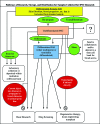Specimen collection for induced pluripotent stem cell research: harmonizing the approach to informed consent
- PMID: 23197820
- PMCID: PMC3659701
- DOI: 10.5966/sctm.2012-0029
Specimen collection for induced pluripotent stem cell research: harmonizing the approach to informed consent
Abstract
Induced pluripotent stem cells (iPSCs) have elicited excitement in both the scientific and ethics communities for their potential to advance basic and translational research. They have been hailed as an alternative to derivation from embryos that provides a virtually unlimited source of pluripotent stem cells for research and therapeutic applications. However, research with iPSCs is ethically complex, uniquely encompassing the concerns associated with genomics, immortalized cell lines, transplantation, human reproduction, and biobanking. Prospective donation of tissue specimens for iPSC research thus requires an approach to informed consent that is constructed for this context. Even in the nascent stages of this field, approaches to informed consent have been variable in ways that threaten the simultaneous goals of protecting donors and safeguarding future research and translation, and investigators are seeking guidance. We address this need by providing concrete recommendations for informed consent that balance the perspectives of a variety of stakeholders. Our work combines analysis of consent form language collected from investigators worldwide with a conceptual balancing of normative ethical concerns, policy precedents, and scientific realities. Our framework asks people to consent prospectively to a broad umbrella of foreseeable research, including future therapeutic applications, with recontact possible in limited circumstances. We argue that the long-term goals of regenerative medicine, interest in sharing iPSC lines, and uncertain landscape of future research all would be served by a framework of ongoing communication with donors. Our approach balances the goals of iPSC and regenerative medicine researchers with the interests of individual research participants.
Figures
References
-
- Takahashi K, Yamanaka S. Induction of pluripotent stem cells from mouse embryonic and adult fibroblast cultures by defined factors. Cell. 2006;126:663–676. - PubMed
-
- Zhang X, De Los Angeles A, Zhang J. The art of human induced pluripotent stem cells: The past, the present and the future. Open Stem Cell J. 2010;2:2–7.
-
- Takahashi K, Tanabe K, Ohnuki M, et al. Induction of pluripotent stem cells from adult human fibroblasts by defined factors. Cell. 2007;131:861–872. - PubMed
-
- Yu J, Vodyanik MA, Smuga-Otto K, et al. Induced pluripotent stem cell lines derived from human somatic cells. Science. 2007;318:1917–1920. - PubMed
Publication types
MeSH terms
Grants and funding
LinkOut - more resources
Full Text Sources


